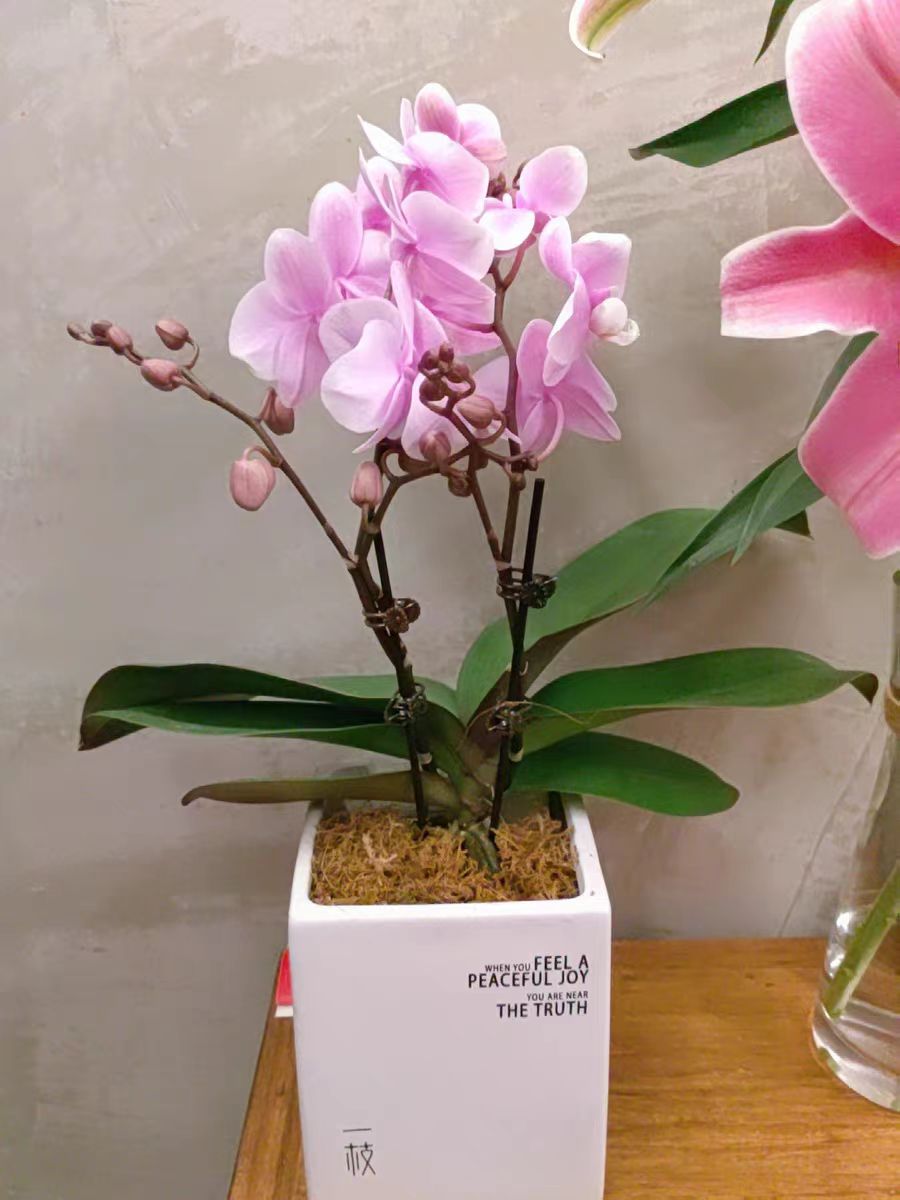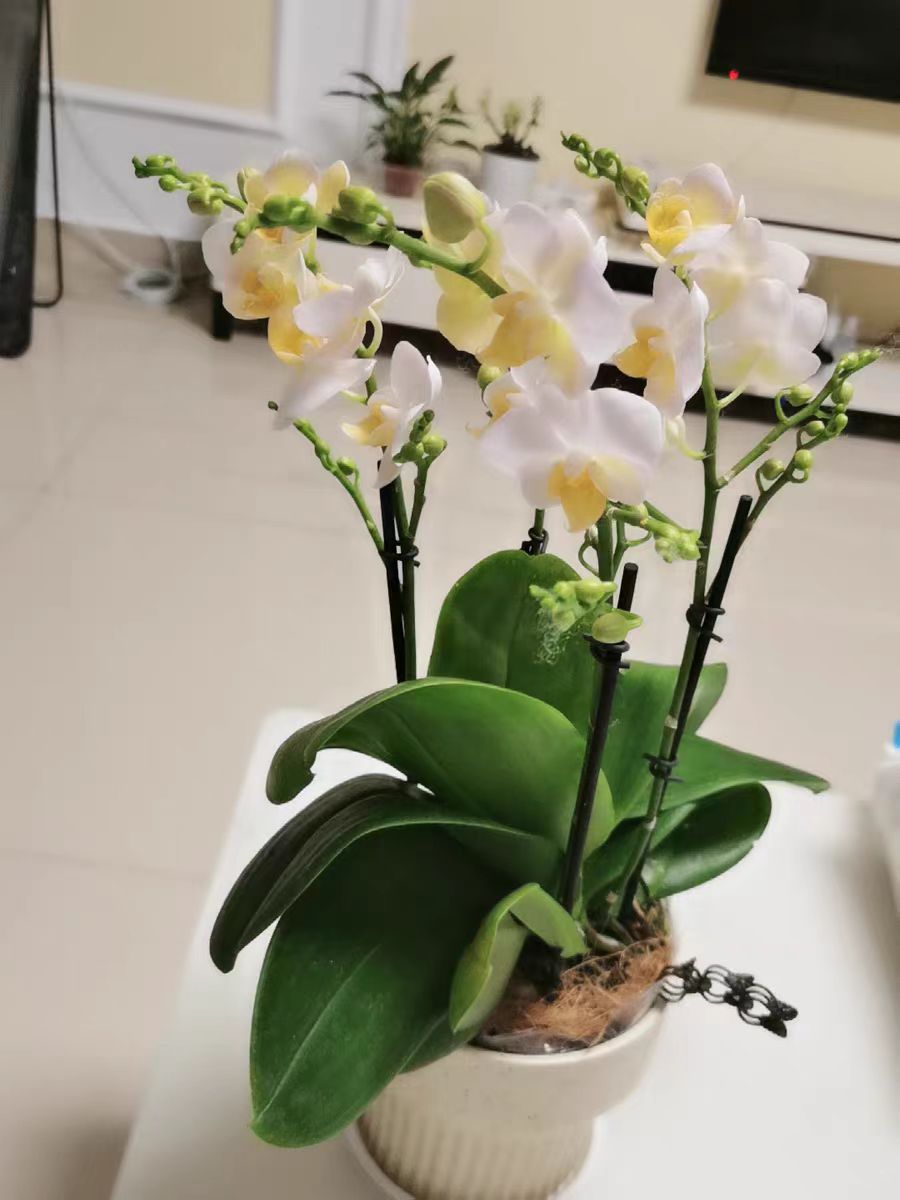Among many ornamental flowers, when the carefully cultivated Phalaenopsis shows the phenomenon of tip drying, it really makes flower enthusiasts worried. First of all, we need to figure out whether the tip drying of Phalaenopsis is actually a physiological phenomenon.
Strictly speaking, the tip drying of Phalaenopsis is not a normal physiological phenomenon. For a Phalaenopsis growing normally, the leaves should be emerald green, plump and shiny. The occurrence of tip drying often signals that there are problems with the plant's environment or the way it is being cultivated. However, in some extremely special cases, it can be barely related to physiological phenomena. For example, after a Phalaenopsis has been growing for many years, the outermost old leaves will gradually age, and the tips of the leaves will start to dry out first. This is similar to the decline of human physical functions with age and is a natural aging process. But this situation is relatively easy to judge. Usually, only a few outermost old leaves show tip drying, and the overall growth trend of the plant is relatively stable, with new leaves still growing healthily.
If all the Phalaenopsis in the whole flower pot have the problem of tip drying, then flower growers need to be extremely vigilant, carefully investigate the causes and solve the problem in a timely manner. The primary cause may be insufficient humidity. Phalaenopsis is native to tropical and subtropical regions, where it is warm and humid. Therefore, it has a relatively high requirement for air humidity, with an ideal humidity range of 60% - 80%. When it is cultivated indoors, if the air is too dry, for example, after the indoor heating is turned on in winter in the north, the air humidity often drops below 30%. The water in the leaves of the Phalaenopsis will be quickly lost, and the tip of the leaves will gradually dry out due to water loss. For this situation, we can place a small humidifier next to the Phalaenopsis and spray it regularly to increase the air humidity. We can also put the flower pot on a tray filled with water and pebbles, and increase the humidity of the local environment through the natural evaporation of water.
Improper watering is also a common factor. If there is too little watering, the Phalaenopsis will be in a water-deficient state for a long time, and the roots cannot absorb enough water to supply the growth of the plant, and the tips of the leaves will dry out. On the contrary, excessive watering will lead to waterlogging and root rot. After the roots are damaged and cannot work properly, it will also cause tip drying. The correct way to water is to follow the principle of "watering when the soil is dry and seeing it wet". Insert your finger 2 - 3 centimeters into the planting medium. If it feels dry, then water it. Water thoroughly so that the excess water flows out from the drainage holes at the bottom of the pot. If the roots have rotted due to excessive watering, it is necessary to take the plant out of the pot in time, trim off the rotten roots, disinfect them with a carbendazim solution, and then replant it with clean and well-ventilated planting medium.
The problem of lighting cannot be ignored either. Phalaenopsis likes diffused light and is afraid of direct strong light. If it is placed on a windowsill or balcony with too strong sunlight, especially the intense sunlight in the afternoon in summer, the leaves are easily burned, and then tip drying will occur. At this time, the Phalaenopsis should be moved to a place with bright light but no direct light in time, such as a position 1 - 2 meters away from the window indoors, or use a shading net to block 50% - 70% of the light.
Unreasonable fertilization may also cause the tip drying of Phalaenopsis. Excessive fertilization and too high a concentration will cause fertilizer damage and burn the roots. Insufficient fertilization means that the plant lacks nutrients and grows poorly, and the tips of the leaves will also dry out. When fertilizing Phalaenopsis, apply thin fertilizers frequently. During the peak growing seasons (spring and autumn), apply a thin liquid fertilizer every 1 - 2 weeks. Reduce or suspend fertilization during winter and the high temperature period in summer.
The tip drying of Phalaenopsis is not a normal physiological phenomenon. When all the Phalaenopsis in the whole flower pot have tip drying, we need to investigate and solve the problems from many aspects such as humidity, watering, lighting, and fertilization. As long as we take good care of it and adjust the cultivation method in a timely manner, the beautiful Phalaenopsis will surely regain its vitality.
Is the tip drying of Phalaenopsis an physiological phenomenon?

Share with
Tagged in :




Leave a Reply